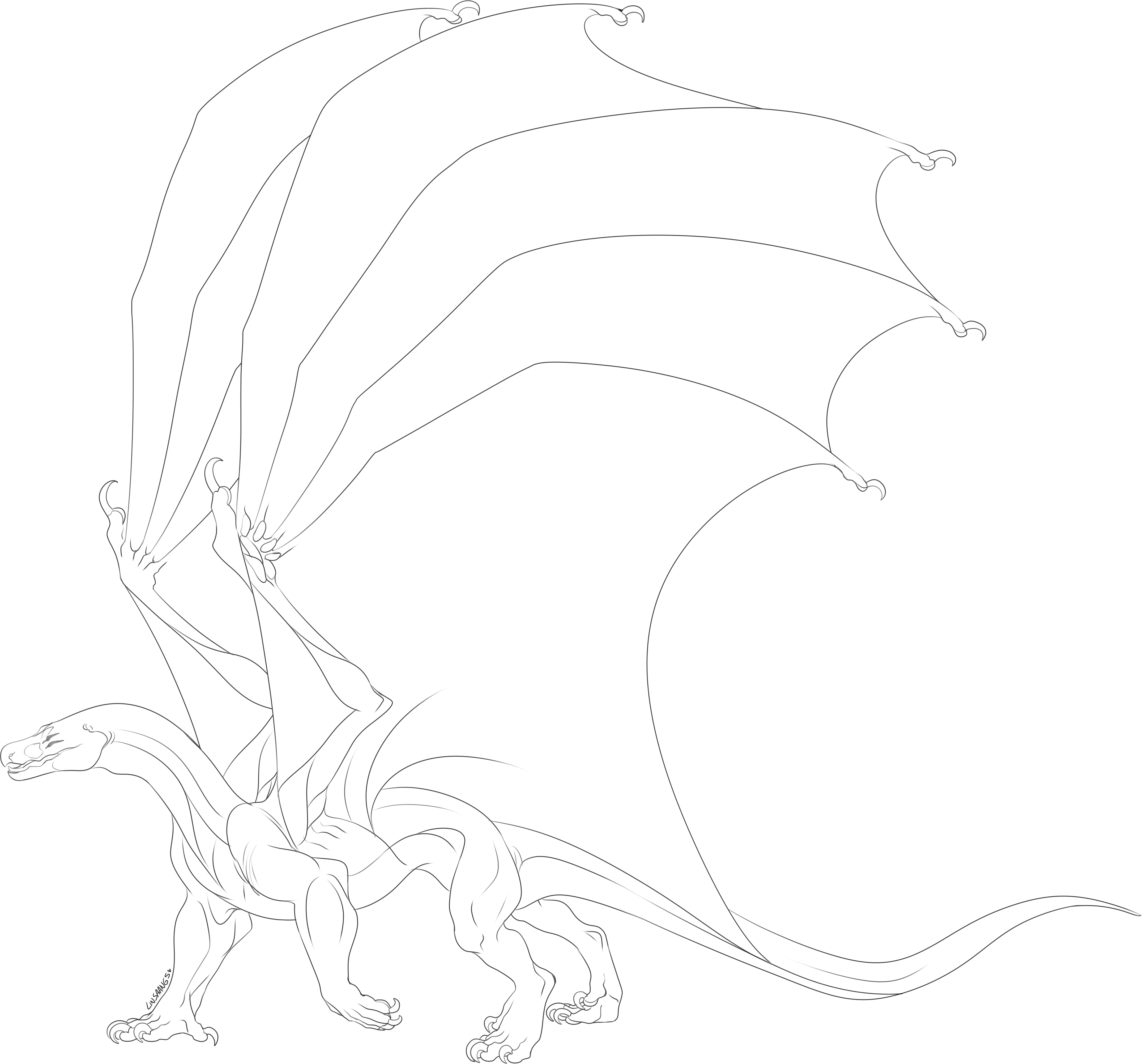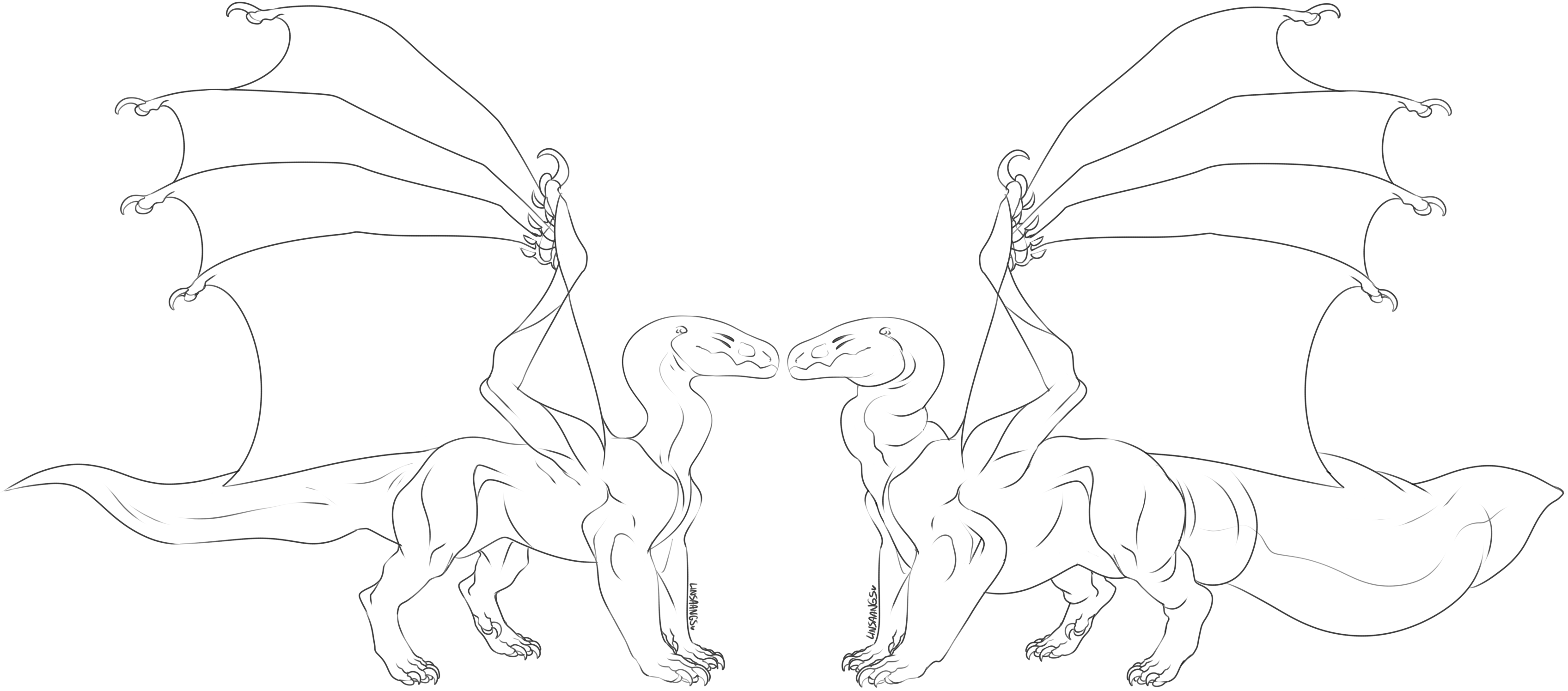anatomy
Return to Crysalla Species Directory
draconian forms
Crysalla naturally have four legs and two wings, with a Soul Stone on their chests, but their anatomy varies greatly by subtype.
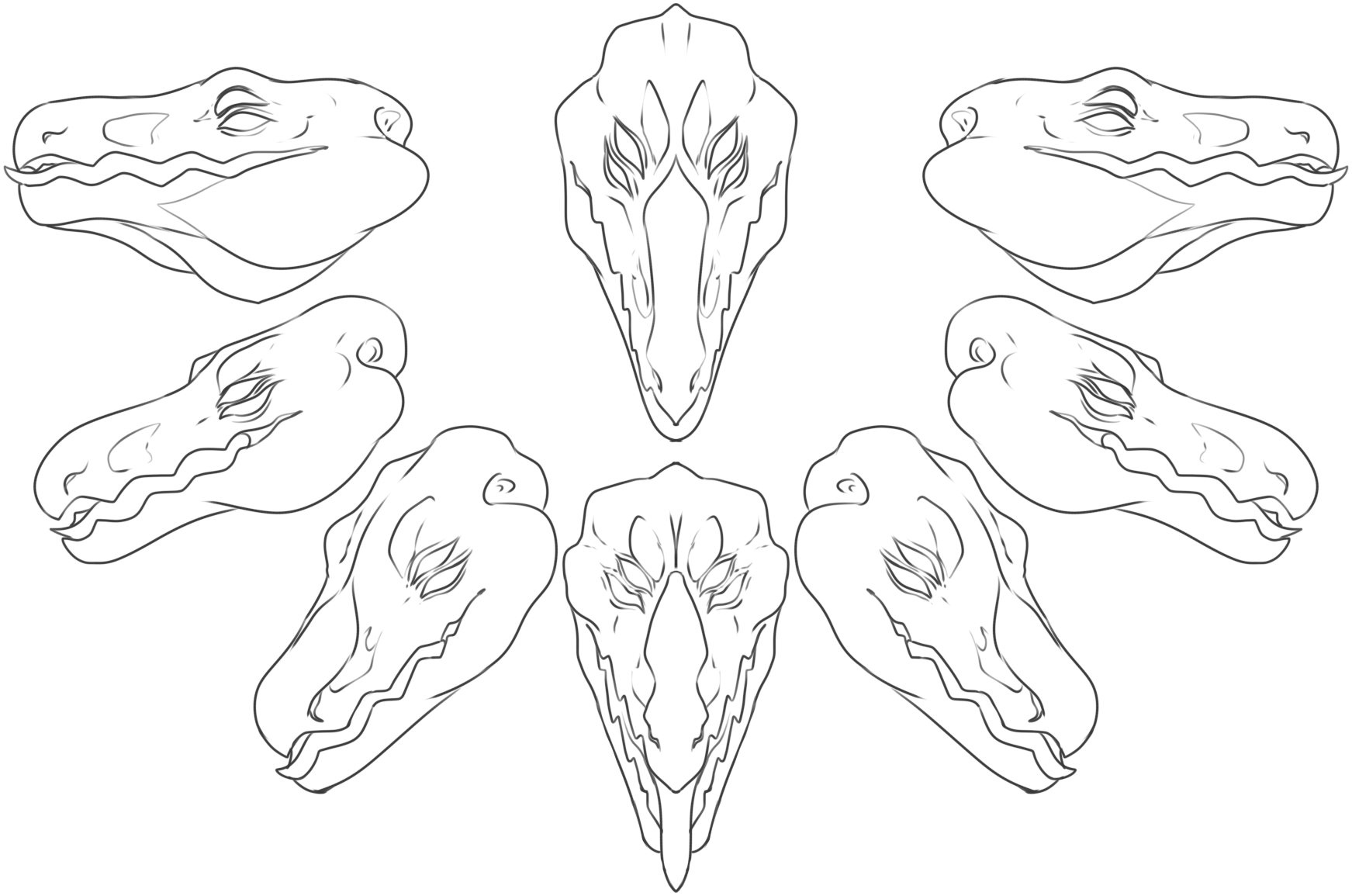
body subtypes
Crysalla come in three distinct body types; Standard, Serpentine, and Dwarf, although all of them can gain or lose weight. Standard and Serpentine Crysalla may survive without water for 10 days, while Dwarf Crysalla may survive without water for up to 20, relying on metabolizing fat stores. Serpentine Crysalla may survive up to 3 weeks without eating, Standard Crysalla 5 weeks, and Dwarf Crysalla up to 15 weeks!
standard crysalla
- Thick, muscular, sturdy bodies. Large front legs, straight back, thin hind legs, and stiff tail. These Crysalla are built for strength, and aren’t very flexible.
- May survive without water for up to 10 days, and up to 5 weeks without eating.
serpentine crysalla
- Long, elongated and flexible bodies. Smaller front legs, curving back, thin hind legs, and flexible tail. These Crysalla are built for speed, and are taller and longer than the standard of the same age.
- May survive without water for up to 10 days, and up to 3 weeks without eating.
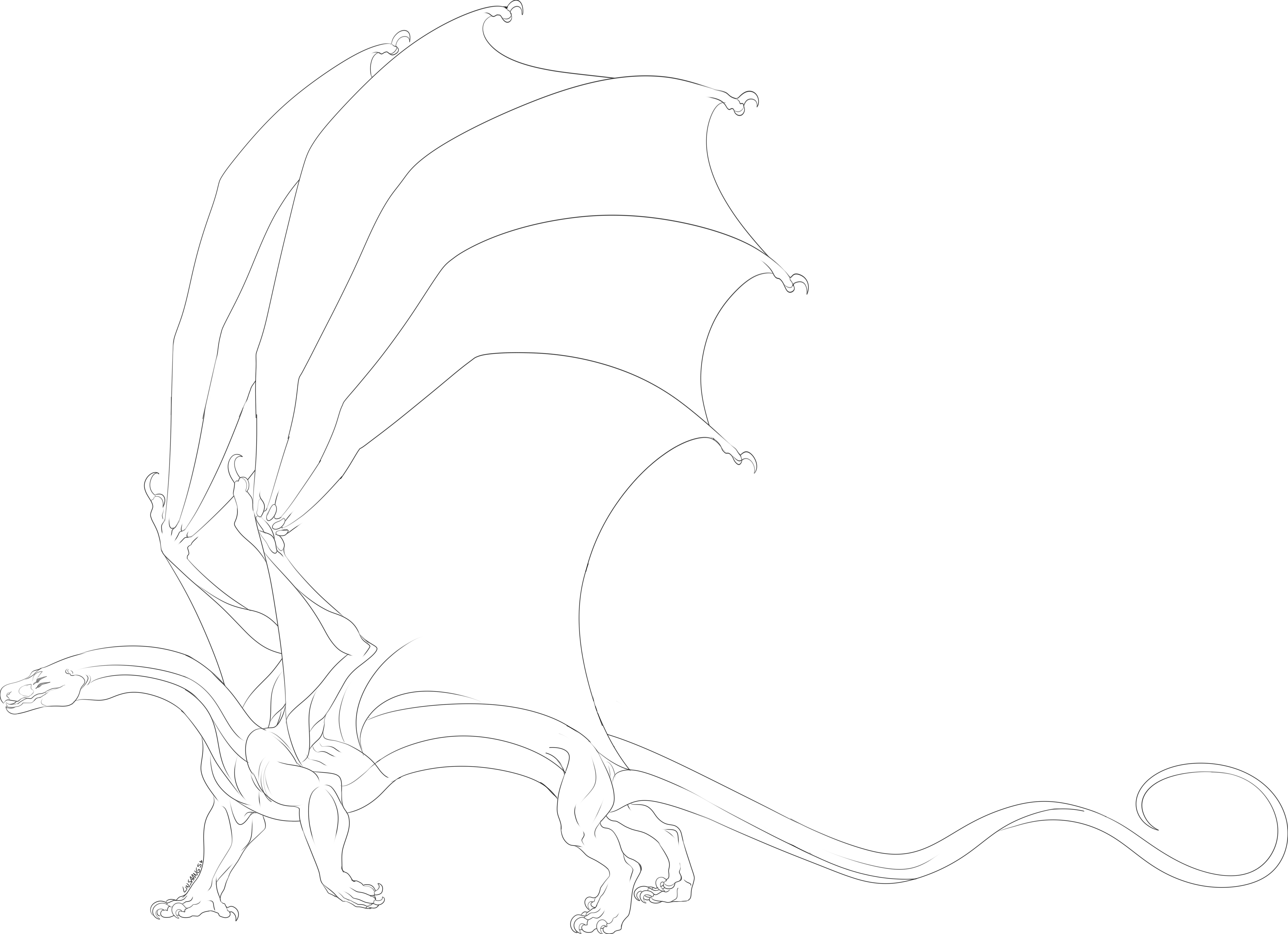
dwarf
- Small, thick, and fat bodies. Thicker legs, short back, and fat deposits in the tail. Smallest Crysalla, and often mistaken for youth. Not to be confused with achondroplasia.
- May survive without water for up to 20 days, and without eating for 15 weeks, relying on metabolizing fat stores.
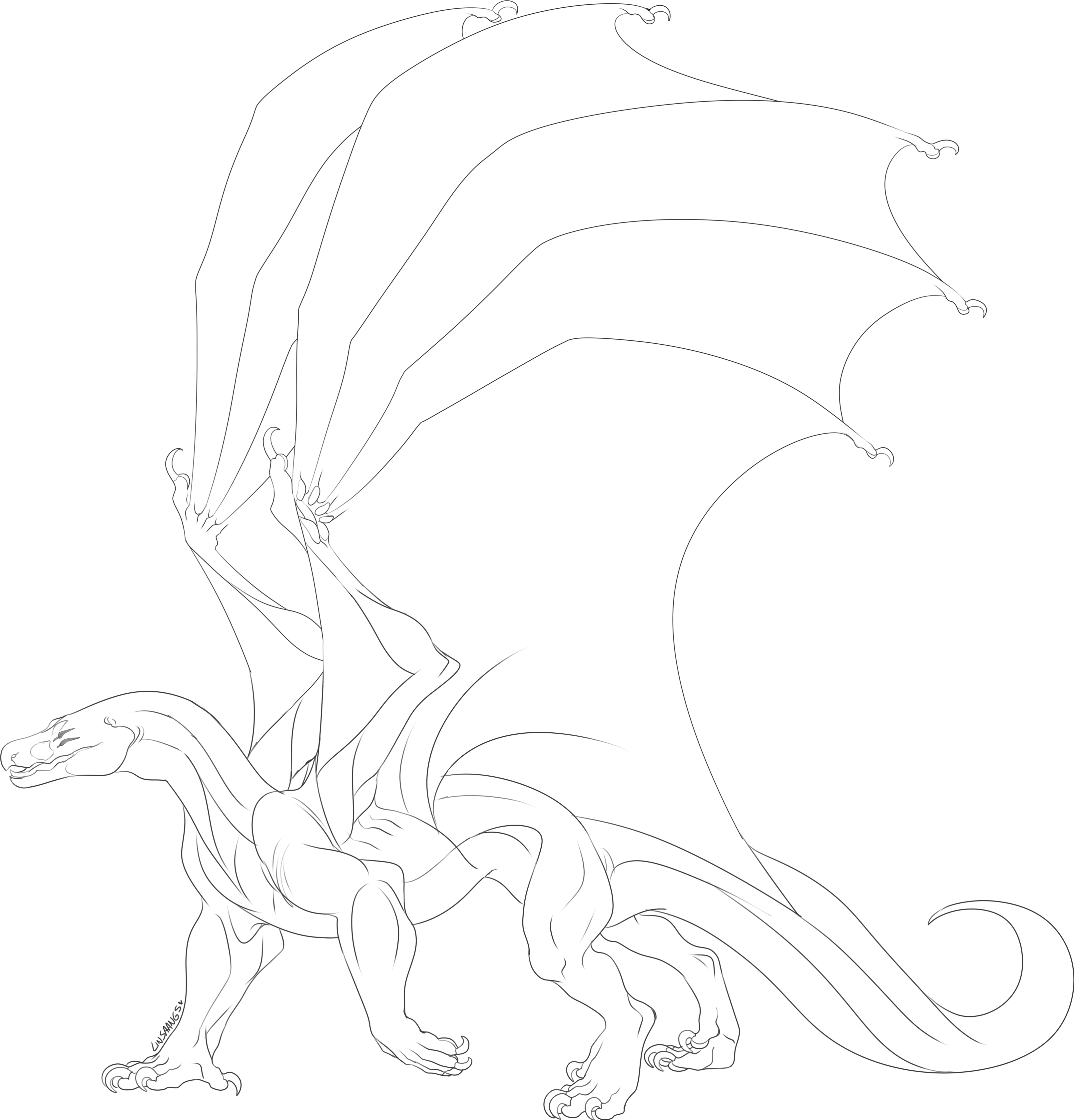
weights
Crysalla of any body type can become under or overweight for their body type. This can be naturally the result of genetics, or merely the result of their lifestyle. While being naturally overweight or underweight can come without any health issues, losing or gaining large amounts of fat can be detrimental to the Crysalla’s health, and is typically symptomatic with an underlying dangerous condition; such as nutrient deficiency and starvation, or a lack of exercise and unhealthy diet.
Standard
-
Underweight
- Underweight Standard Crysalla look a bit off balance. Their forelimbs have lost their fat reserves, resulting in a thin appearance, looking unfit to support the Crysalla’s broad frame. Without a prominent belly, their rib and hip bones are more prominent. These Crysalla aren’t in any immediate danger of starvation; and can carry on with regular life without risk of catabolism. Some Crysalla are just skinny, and that’s okay!
-
Overweight
- Overweight Standard Crysalla have stocky appearances, looking much like a bigger Dwarf. They develop fatty jowls on their cheeks, their forelimbs are thick, their bellies hang low, and their tails are thicker and stiffer, and they’re less flexible overall. If otherwise healthy; these Crysalla are capable of flying and living as normal. It takes more work to achieve powered flight, but as long as the Crysalla exercises and eats healthily, their lungs and heart are fine. Some Crysalla are just fat, and that’s okay! In fact, it’s considered attractive, as it implies a higher social status; eating well, a lack of physical labor, and traveling less.
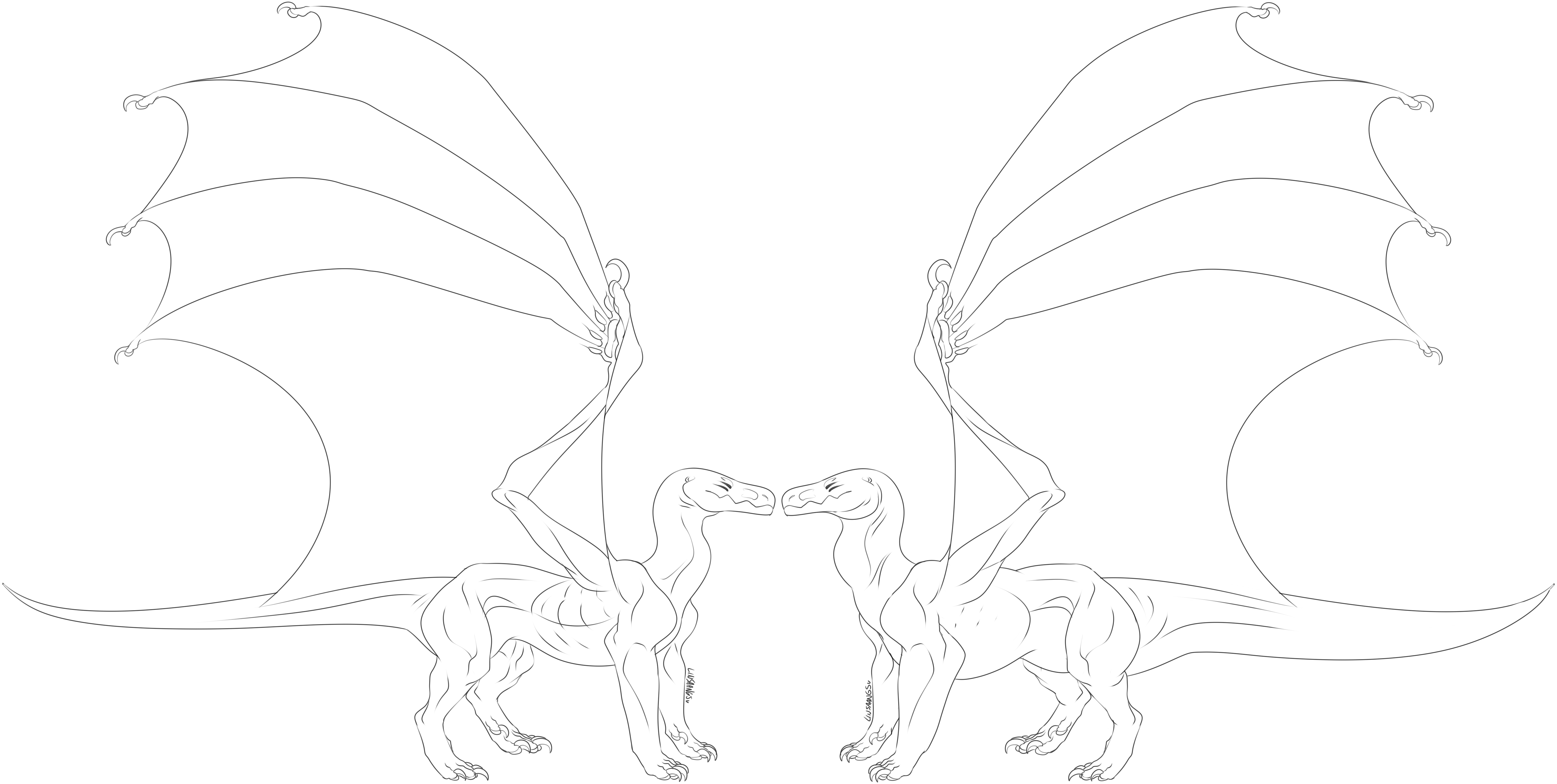
Serpentine
-
Underweight
- Yikes! Becoming underweight is extremely dangerous for Serpentine Crysalla. Their body is forced into catabolysis; burning muscle for sustenance due to lack of food stores. They’re at risk for a slow, painful death of starvation. All the bones of the Crysalla become prominent, their spines and ribs pushing out of the skin, the face becomes sunken, without its fatty cheeks, and their limbs are spindly and weak. The Crysalla does not have enough energy to fly, and is completely grounded, or risks dying of exertion.
-
Overweight
- Overweight Serpentine Crysalla no longer have visible ribs, but they do not develop jowls like Standard and Dwarves. They resemble a Standard Crysalla that’s been stretched out. These Crysalla can fly without issue, as long as they’re eating and exercising well to support their heart and lung health. Some Crysalla are just fat! These Crysalla are actually considered very attractive due to their figure! They’re clearly eating well and living a life without hard labor or constant travel, all while maintaining long, elegant bodies.
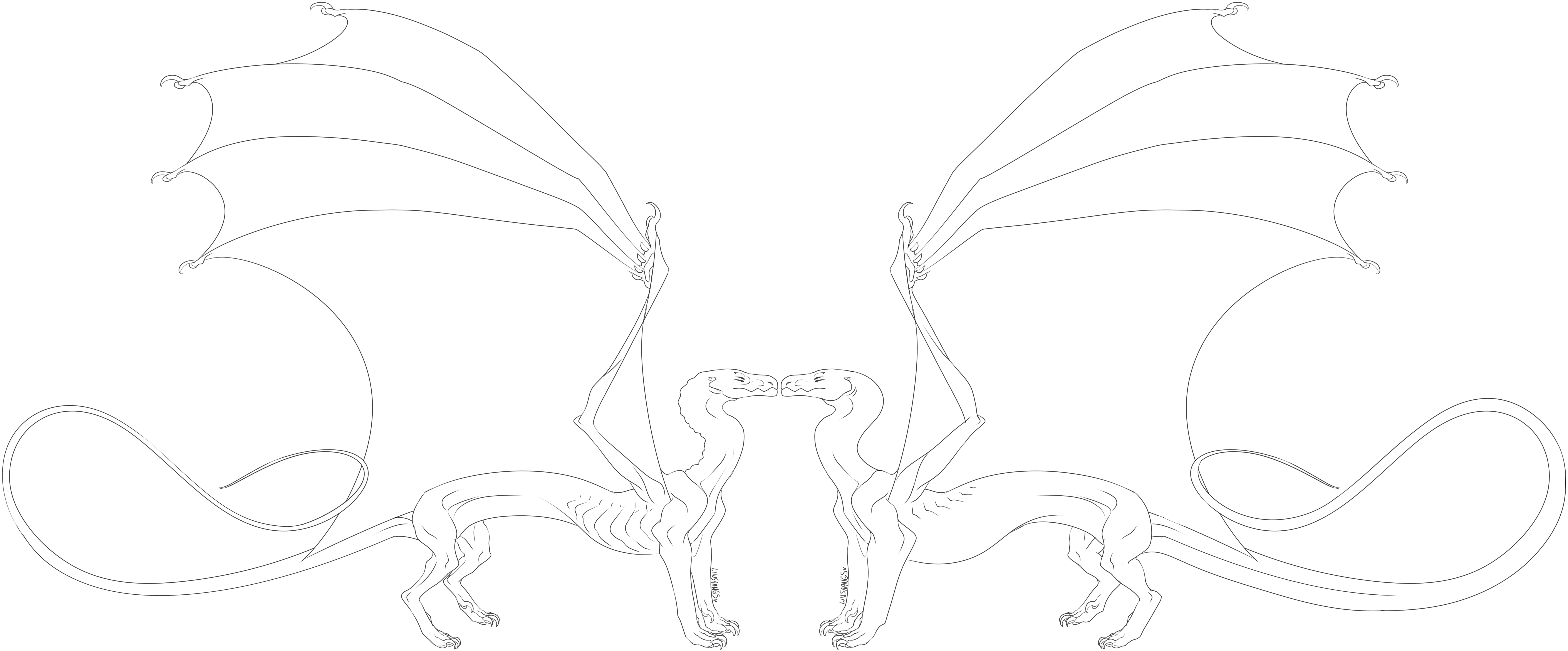
dwarf
-
Underweight
- Underweight Dwarf Crysalla simply resemble young Standard Crysalla. Their tails may look lumpy, due to depleted natural fat stores. They still retain enough fat to support regular activity, with no danger of catabolism. Some Crysalla are just skinny!
-
Overweight
- Overweight Dwarf Crysalla contain an excess of fat stores. They develop large jowls, rolls of fat on their bodies, a low belly, wide limbs, and their tails swell until they no longer have a tapered end. In order to achieve this weight, a Crysalla must live a very terrestrial lifestyle while consuming large amounts of food, because flying naturally burns a lot of calories. This results in powered flight being extremely taxing on an overweight Dwarf, as the atrophied heart and lungs simply cannot support the increased weight.
bipedal forms
Crysalla are capable of shifting between their draconian and bipedal forms naturally, although it expends energy. Shifting frequently will make a Crysalla very hungry, as it burns calories fast. Crysalla mostly use their bipedal form for fine motor tasks that require the use of their hands. Crysalla do not have breasts or a belly button.
Crysalla are capable of “tucking” their wings into their bodies within their bipedal form, for the ease of maneuvering in tight quarters.
Crysalla wing membranes in their bipedal form only extend to the end of their spine, to allow for clothing. They have long slits in the back of their clothes for their wings to push through. Crysalla have avian scapulae to allow for the wing bones to attach to the musculoskeletal structure, not human shoulder blades!
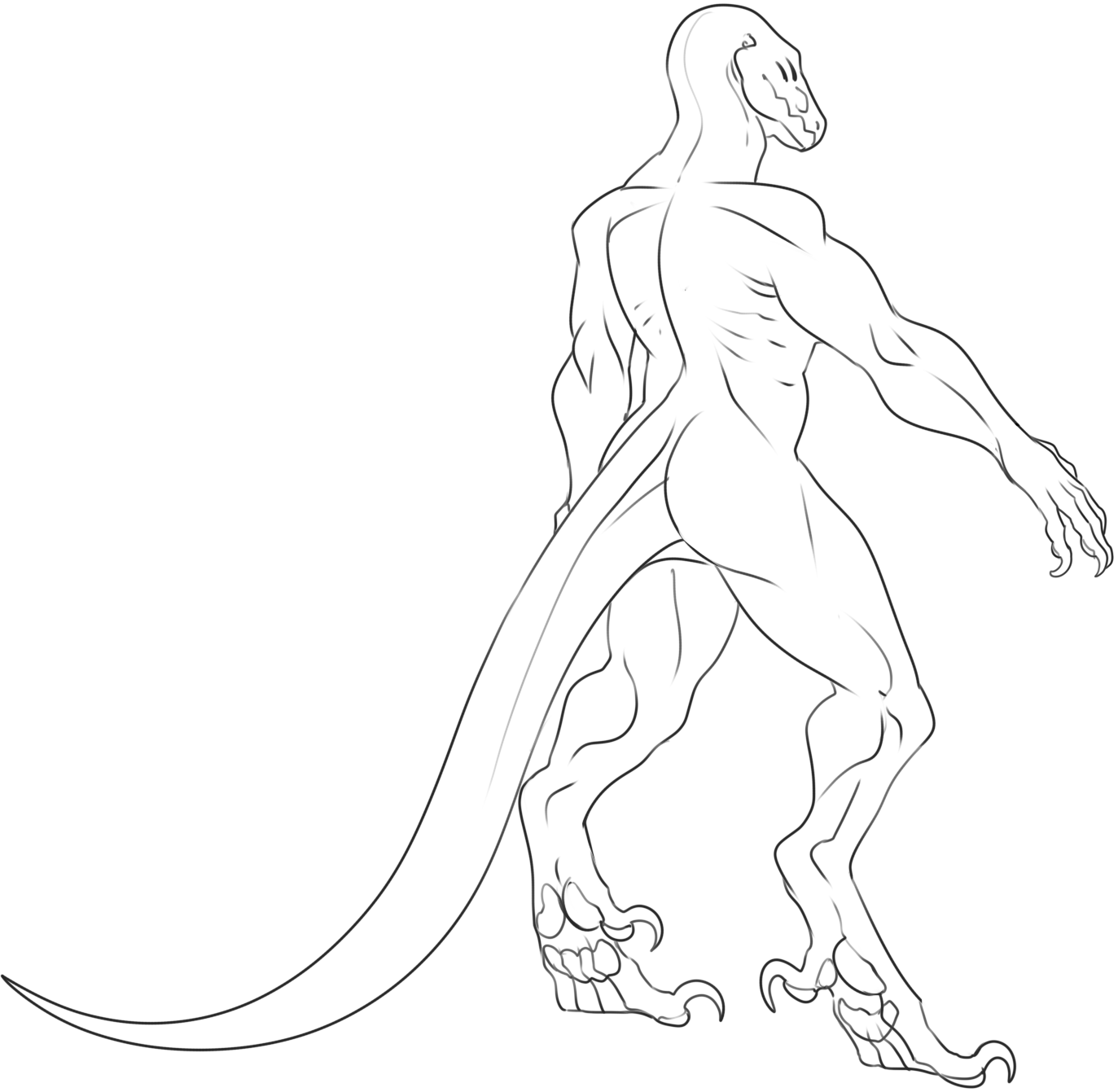
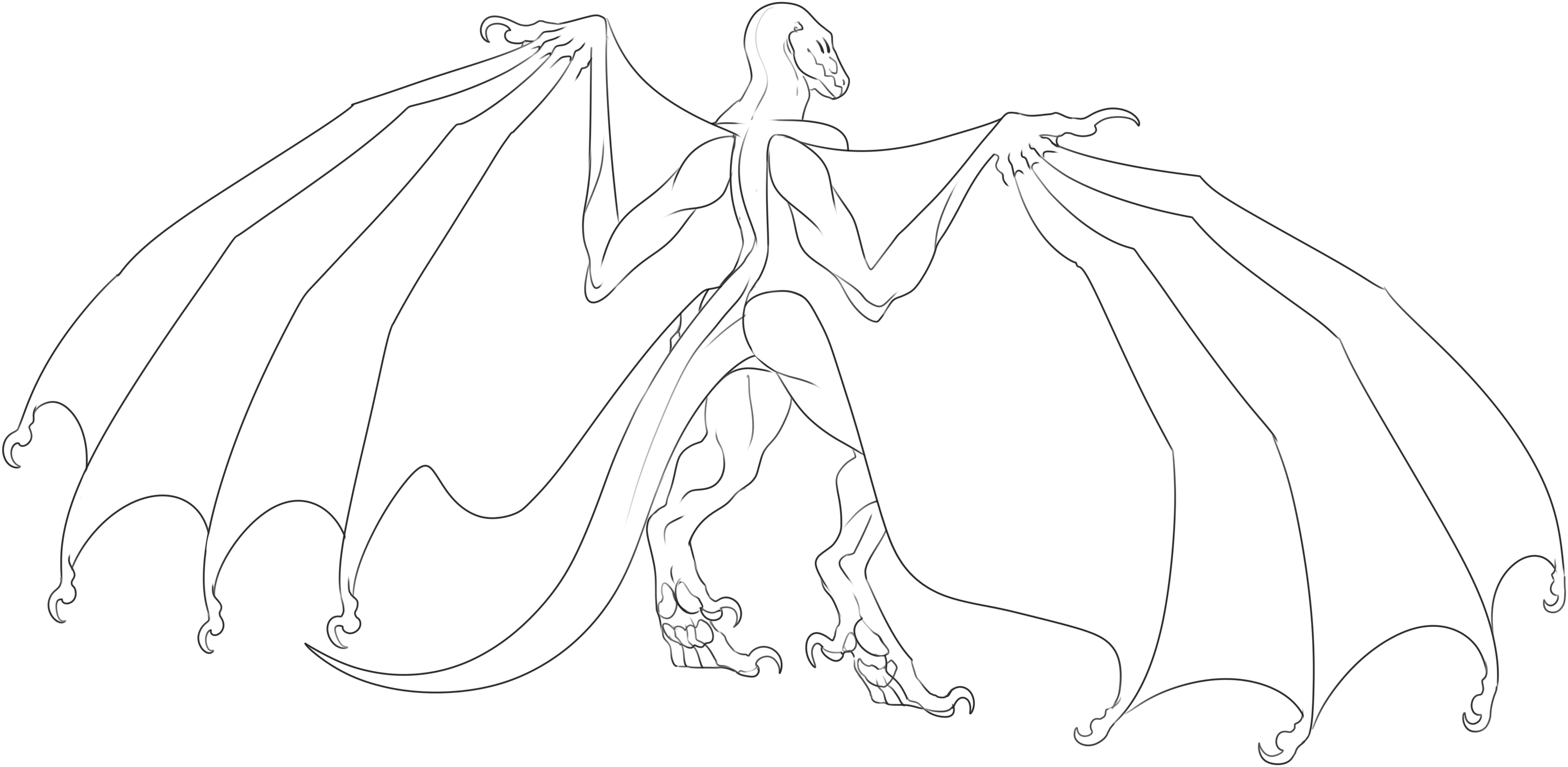
body subtypes
Standard
- Thick, muscular, sturdy bodies. Large forearms, straight back, thin hind legs, and stiff tail. These Crysalla have an abdominal and limb fat distribution pattern. These Crysalla are built for strength, and aren’t very flexible.
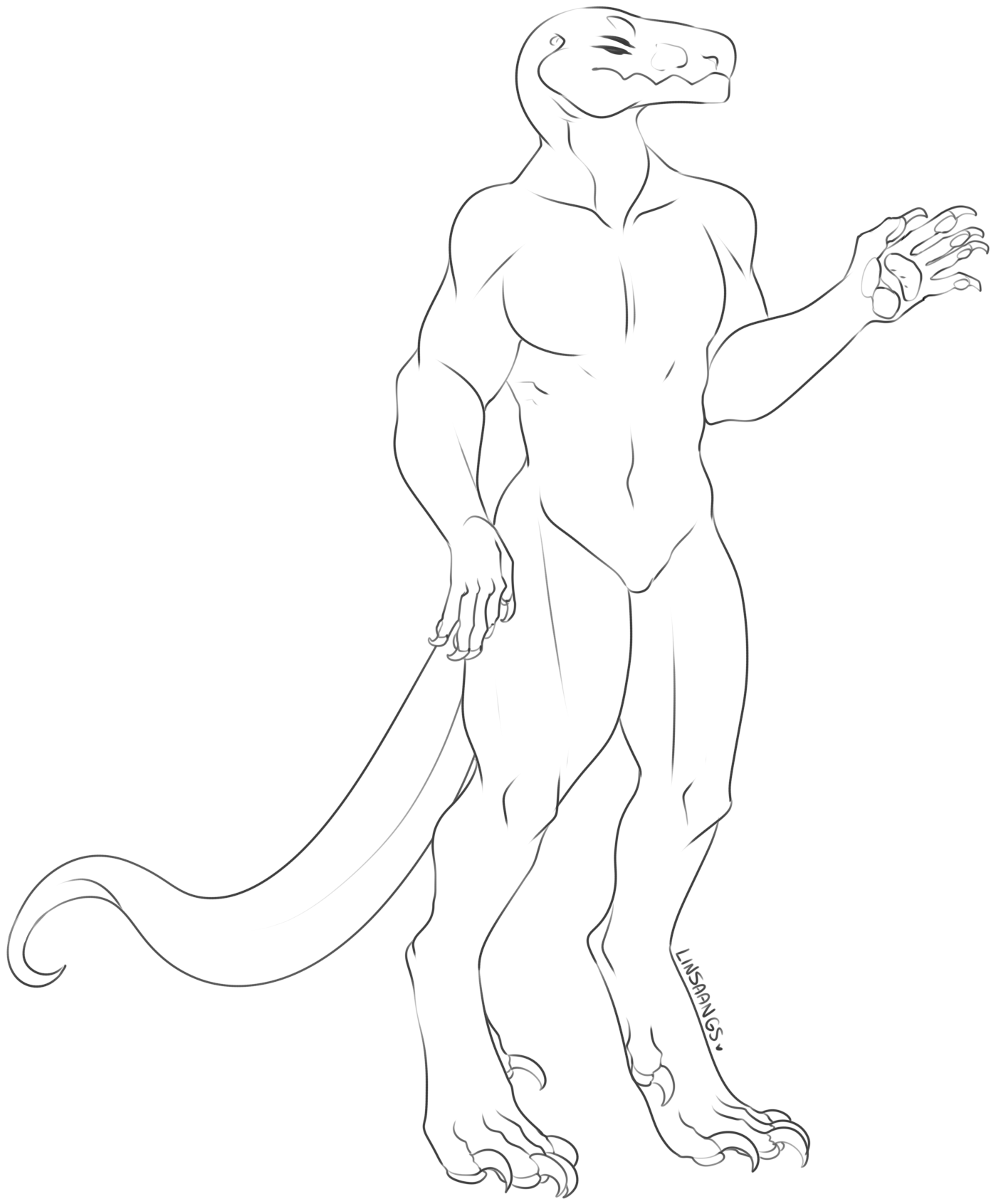
serpentine
- Long, elongated and flexible bodies. Smaller forearms, thin legs, and flexible tail. These Crysalla have an hourglass fat distribution pattern. These Crysalla are built for speed, and are taller than the standard of the same age.
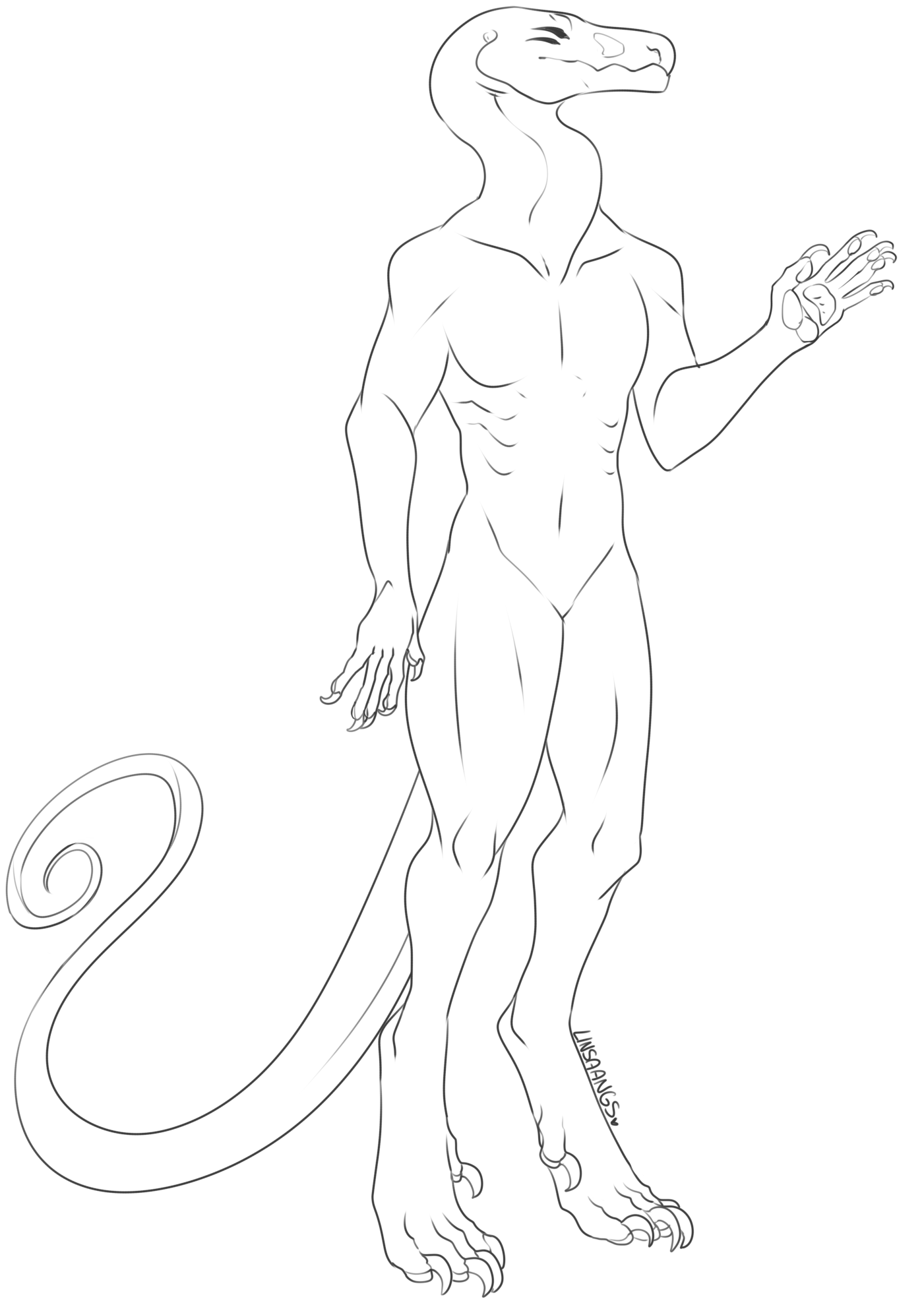
dwarf
- Dwarf - Small, thick, and fat bodies. Thicker limbs, short stature, and fat deposits in the tail. These Crysalla have an even fat distribution pattern throughout their body. Smallest Crysalla, and often mistaken for youth. These Crysalla are built for going long periods of time without eating. *Not to be confused with achondroplasia.
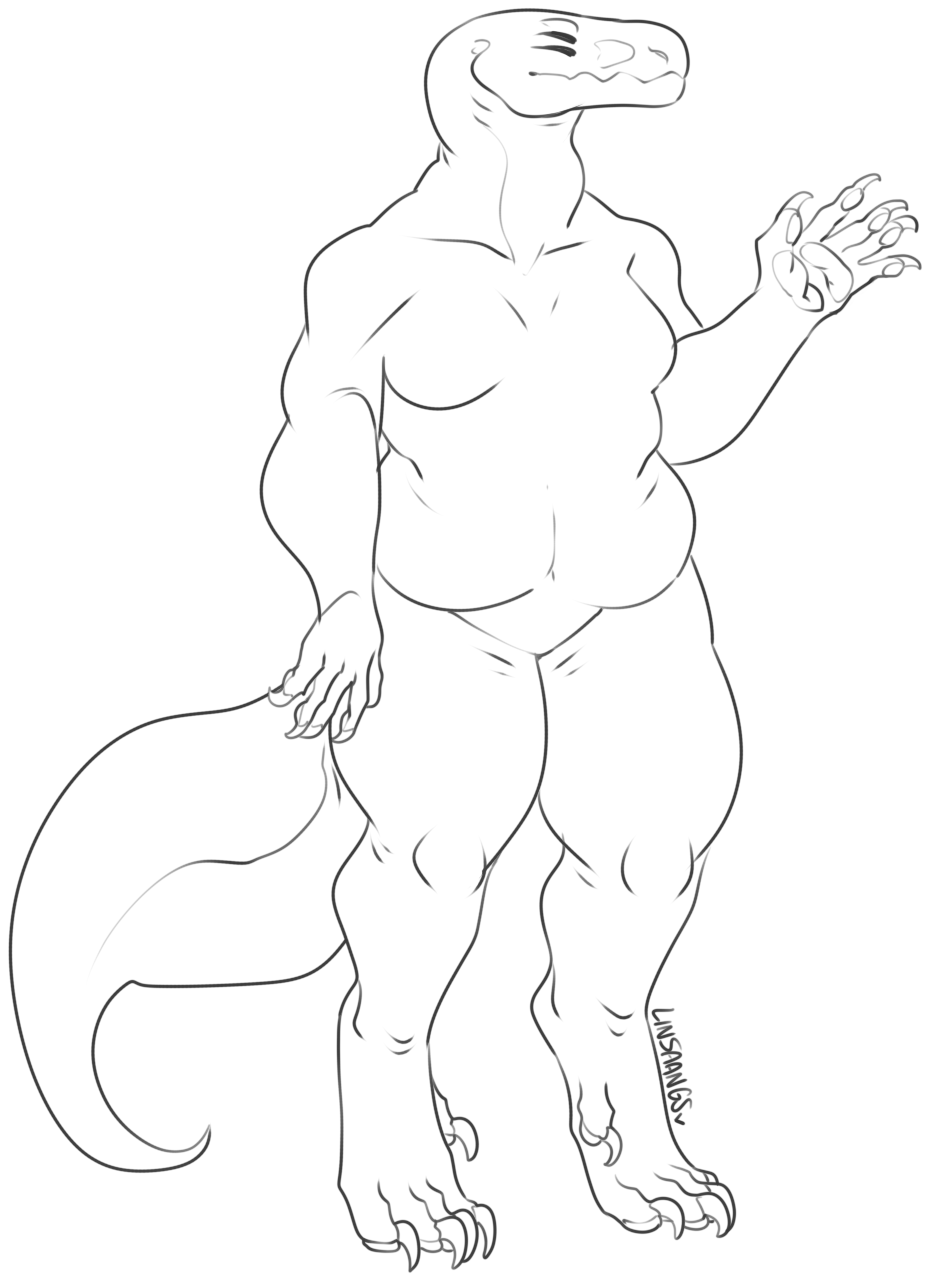
weights
Crysalla come in every shape and size, and that holds true for their bipedal form as well! Fatter Crysalla may develop “masculine” fat deposits on their chests, but not “feminine” breasts.
Standard
-
Underweight
- Underweight Standard Crysalla resemble Serpentine Crysalla, only shorter. Their tail and limbs are thinner, and they have visible ribs. They typically retain muscle mass, resulting in a lean appearance.
-
Overweight
- Overweight Standard Crysalla store fat in their tails, thighs, forearms, and most prominently, belly. They’ll acquire a “beer belly” appearance; but don’t be fooled. This fat protects a ton of powerful natural muscle, and these Crysalla can bench you. These Crysalla are considered powerful and attractive!
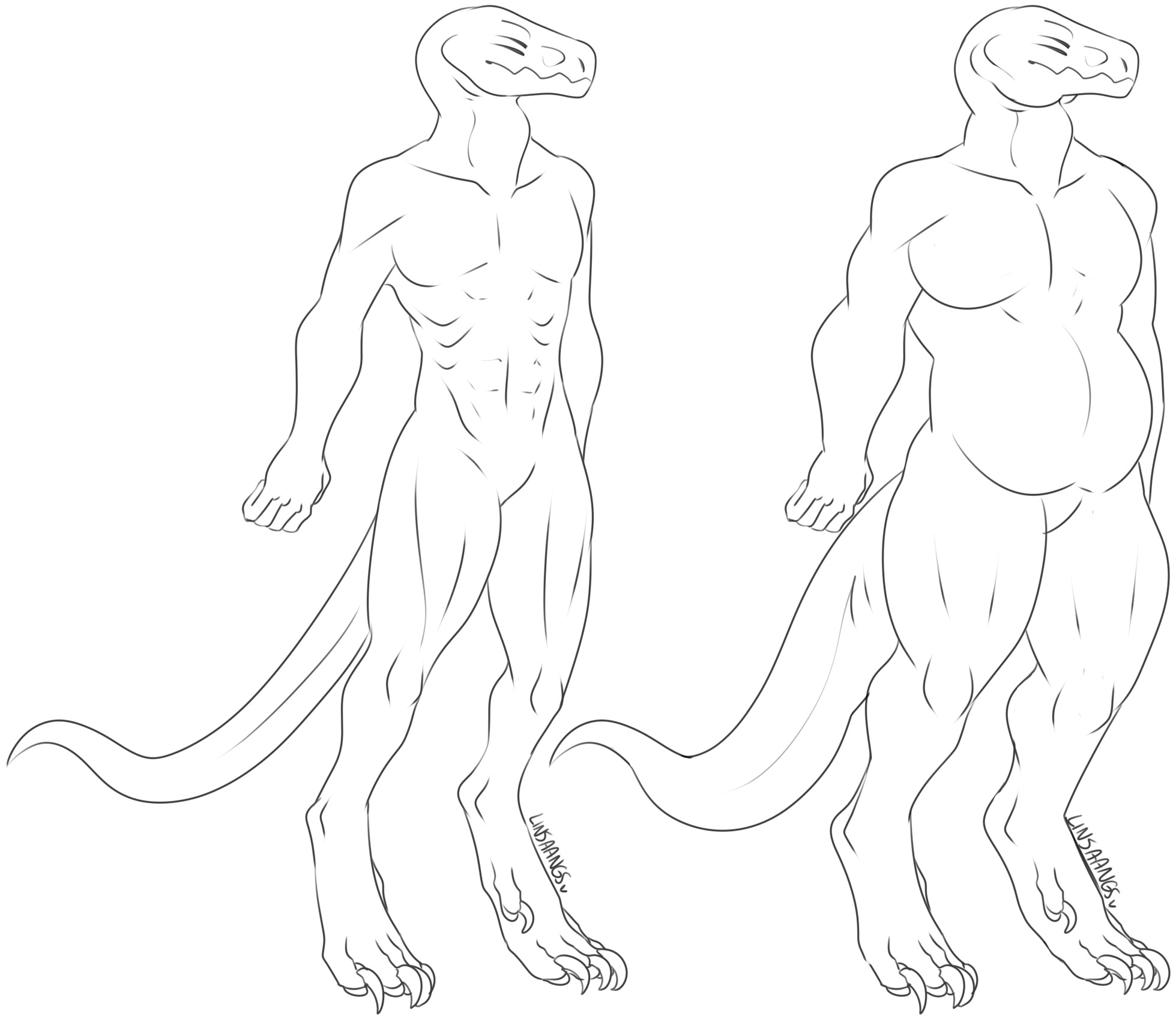
Serpentine
-
Underweight
- Becoming underweight is extremely dangerous for Serpentine Crysalla. Their body is forced into catabolysis; burning muscle for sustenance due to lack of food stores. Because of this, they have a skinny, starved appearance, a gaunt face, a whip-thin tail, and visible ribs and spine.
-
Overweight
- Overweight Serpentine Crysalla do not develop the fatty jowls of Standard and Dwarves. Their fat is concentrated in their hips, thighs, and forearms, creating an hourglass figure. Even the thinner tail types will thicken, but maintain their flexibility. These Crysalla are considered very attractive!
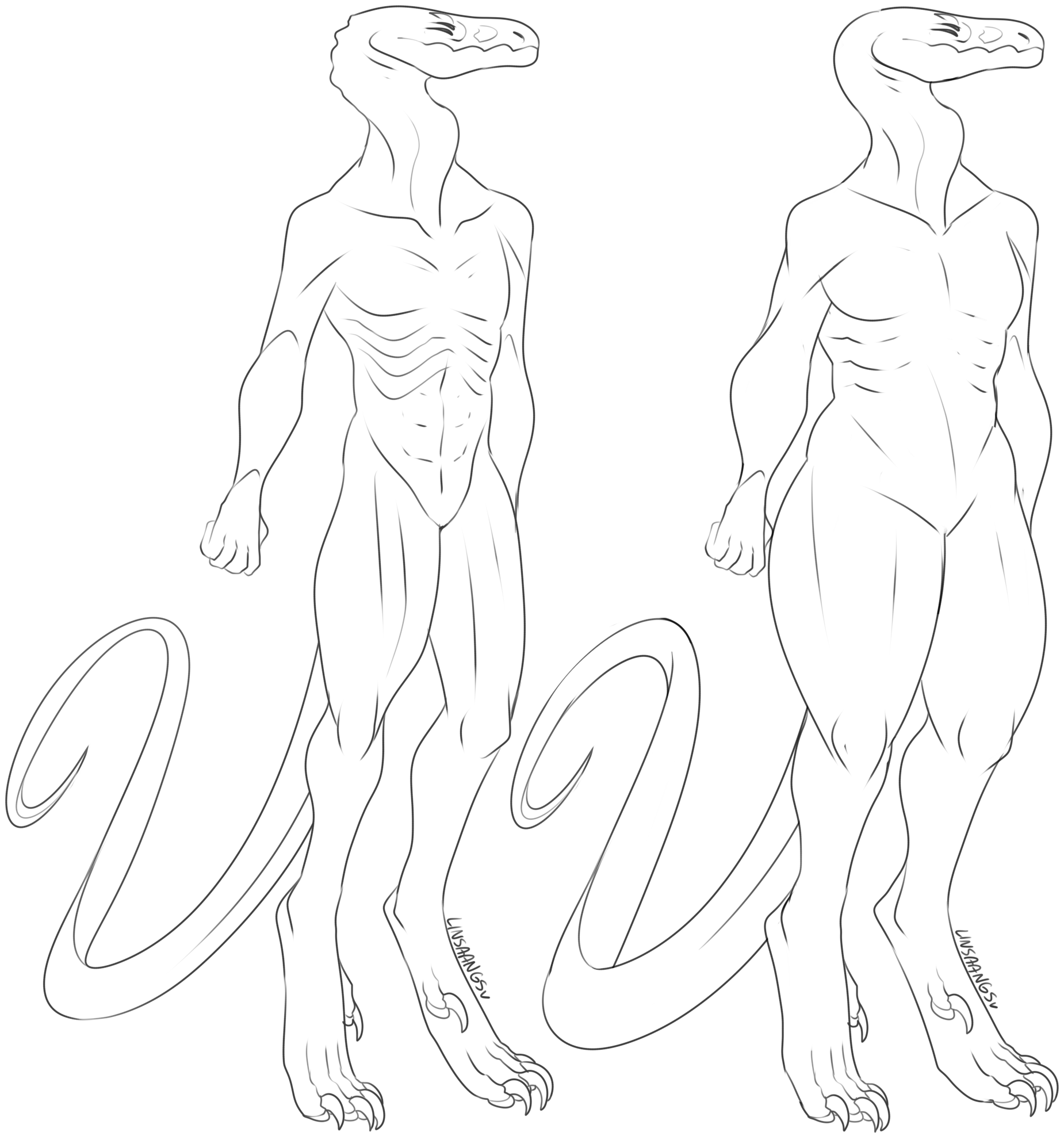
Dwarf
-
Underweight
- Underweight Dwarf Crysalla are short and scrawny. They resemble young Standard Crysalla. Despite most of their tail fat reserves being depleted, they retain a wide appearance, and their ribs are not visible.
-
Overweight
- Overweight Dwarf Crysalla display a more balanced fat distribution on their bodies compared to others. They’re stocky, have multiple fat rolls, and their tails are so swollen they are no longer tapered at the end.

